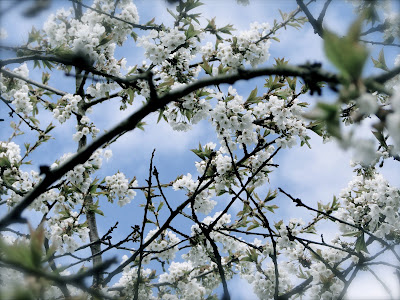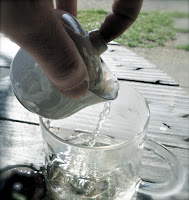WHITE
When our cherry tree begins to sing
because the white blossoms lure hundreds of buzzing bees, than spring invites
me to brew a clear and pure tea, to celebrate the awakening of nature.
How could it be otherwise that I choose
a white tea with fine, downy leafs: for example, Pai Mu Tan from the mountains of Fujian, China.
White tea
gets its name from the fine silvery white hairs on the unopened buds of the tea
plant. It’s the least processed form of tea, made of select leaves which have
been steamed and dried.
The legend tells us that Qin
Shihuangdi, the first Emperor of China (259-210 BC), believed that white tea was
an essential ingredient of the elixir of life, which makes him immortal. He
commands to collect the fragile tea leafs only by virgins who have to use golden
scissors for it. No one should touch the leafs after the harvest, except
himself, for brewing the tea.
Unfortunatly, he died when he was 49 years old,
despite to have the privilege to drink this extraordinary tea.
Nowadays, it is still a privilege to
drink white tea. Although, everyone can drink it, not only the emperor and
meanwhile we know that it promises us not the infinite life, it’s always a
special experience to enjoy its delicate taste.
To brew this Pai Mu Tan, I use a gaiwan. It’s a Chinese tea bowl, invented during the
Ming Dynasty (1368-1644) and consists of a saucer, a cup and a lid.
After rinse
the gaiwan with hot water, I fill the dry tea leafs into the cup, fill again
with hot water (80°C) and let the tea infuse for 4 min. It’s possible to drink directly from the gaiwan,
but I have poured the tea into a serving pitcher and than into a tasting cup.
My eyes are blinded by the sight of so
many blossoms, the taste of tea let me see the beauty of it.

Photo’s, gaiwan, teacup (stoneware):
Iris Weichler



No comments:
Post a Comment